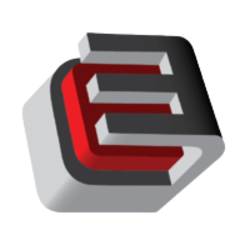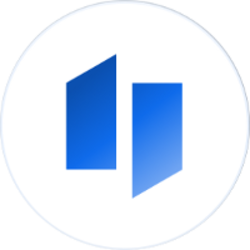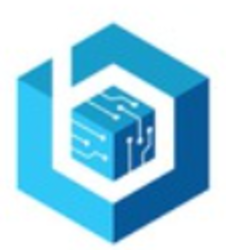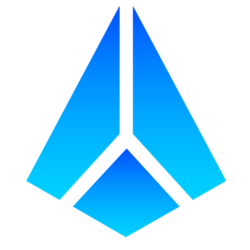The debate over energy and its cost has never been more relevant in today’s society. We are facing significant environmental challenges while also trying to make our energy sources sustainable for the future.
With technologies like blockchain revolutionizing how we view and interact with decentralized systems, the energy market is ripe for disruption.
Voltreum is a blockchain project with the potential to revolutionize energy sharing and trading, allowing users to make P2P transactions. In this article, we’ll dive deeper into what Voltreum is, how it works, and what its roadmap looks like.
What Is Voltreum?
This team has recently gathered a lot of interest from the market thanks to Volt-X. Volt-X is one of the many products of the Voltreum ecosystem.
The project proposes, among other features, a decentralized app (dApp) and a native cryptocurrency. It aims to enable individuals, companies, and even countries to trade energy easily and securely over smart microgrids.
Users can buy and sell energy on-demand, with no geographical barriers, through the Volt-X app and its coins. It will change how energy circulates and make it more secure, efficient, and cost-effective.
With Voltreum, everyone can benefit from clean, renewable energy regardless of where they live.
A Fundamental Premise – The Problems Voltreum Wants to Address
Before we look at what Voltreum plans to do, let’s consider its fundamental premise. The energy market faces many challenges, such as rising consumer demand, increasing electricity costs, and unreliable energy supply.
At the same time, a growing number of renewable energy sources are becoming available to meet this need. However, transitioning from traditional fossil fuels to renewable sources will be difficult due to several inherent challenges.
The debate over how to best bridge the gap between traditional and renewable sources has been raging for many years. Voltreum’s goal is to provide a way to solve most of the issues of the world energy market.
A Borderless P2P Energy Trading System
Voltreum is developing a borderless P2P energy trading system to revolutionize the traditional energy markets. The ecosystem consists of two players:
- Prosumers (entities or consumers who not only consume but even produce energy)
- Consumers (entities or consumers who only consume energy)
This new ecosystem will enable faster and more accurate energy transactions and ensure the data is secure from cyber-attacks. This new architecture has much to offer prosumers and energy producers.
Microgrids will form the backbone of this new architecture and enable prosumers to trade energy globally. With Voltreum, prosumers can find buyers and sellers for their green energy without geographical restrictions. In this way, it is possible to promote more efficient trading of clean energy on a larger scale.
The Three Pillars of a P2P Energy Trading System
Voltreum uses smart contracts to enable trustless and automated transactions between prosumers and consumers. This offers numerous advantages over traditional energy trading systems, such as:
- Security: Smart contracts provide a secure environment for energy trades, as all information is encrypted and stored on the blockchain.
- Reliability: The distributed nature of a P2P network ensures that users can trade energy even when a node goes offline.
- Scalability: Voltreum’s P2P trading system can handle large-scale energy exchanges between multiple prosumers and consumers.
At its core, Volt-X is a secure, distributed, and scalable platform for P2P energy trading. As such, it provides an easy means for its community members to exchange renewable energy without worrying about data or identity theft.
A Look at How Volt-X Works
After our high-level premise on Voltreum, we are ready to see how this project works. First, you should know that the team uses IoT, blockchain, and AI technology to provide users with viable solutions.
Picture it this way: each microgrid will be able to connect different residential and commercial or industrial units and enable them to exchange renewable energy. Thus, the microgrid will provide a near real-time, transparent, and secure system to generate renewable energy on demand.
Volt-X backend consists of multiple interconnected elements that communicate with each other. These include:
- VCP Engine
- Hardware data sources (like IoT meters)
- Telegraf/custom brokers
- Two databases for data storage (Influx and SQL)
- Grafana for data visualization and analytics
- RHEL 9.0 (or compatible) operating system.
These elements work together to provide users with a reliable and secure platform to manage their energy needs.
The VCP Engine, based on gRPC technology, processes the data from IoT meters and provides it to the front-end clients. This data will go through an encryption process using SHA-2 technology to protect it from any cyber threats.
The two databases within the system serve to store user data and metadata. The InfluxDB will store time-series data, while SQL will take care of all other types of user data and metadata. This ensures that the platform does not expose user data to potential risks.
The Grafana analytics system provides users with data visualization and insights into their energy usage.
Finally, the backend runs on an RHEL 9.0 operating system (or other compatible OS) for maximum stability and security. This ensures that the platform is accessible from nearly any device, allowing users to manage their energy needs from anywhere.
The Voltreum Blockchain Technology
The blockchain technology that Voltreum uses heavily relies on a smart contract system. This technology allows participants to securely and efficiently transact renewable energy without third-party intermediaries.
It also streamlines the process of verifying, validating, and settling transactions within the platform. Specifically, the team uses the Global Digital Cluster Coin (GDCC) protocol to support its operation.
Voltreum selected GDCC because it offers a secure, reliable, and transparent platform for energy trading. It also ensures that users pay the lowest possible cost for their transactions.
Lastly, GDCC’s distributed ledger technology supports Voltreum in providing data security, enabling users to easily track their transaction histories.
A Differentiated Revenue Stream
Voltreum’s revenue system revolves around three key components; technology, advisory, and other revenue streams.
The project’s tech offering focuses on creating a secure, scalable, and fully digital utility infrastructure for the global sector. Specifically, it comes with commissions on every energy transaction, recurring maintenance charges, and partnerships with utility companies.
Advisory services will help guide public sector agencies toward digital transformation. This strategy can enable them to tap into the many opportunities of Voltreum’s technology.
Lastly, other revenue streams will come through the monetization of Voltreum’s machine NFTs. The company will also charge participation fees for energy-related events in the metaverse.
The Project’s Tokenomics
The project’s total token supply will be equal to 1.4 billion coins. Voltreum clearly illustrated the following distribution for its cryptocurrency:
- Seed (3.57%)
- Private rounds (7.14%)
- IDO (0.4%)
- DEX Liquidity (6.74%)
- Company Reserves (17.86%)
- Airdrops (0.71%)
- Treasury (4.29%)
- MKT (8.57%)
- RnD (3.57%)
- Legal (1.43%)
- Team (7.14%)
- Partnerships (2.86%)
- Staking (17.86%)
- In-platform rewards (17.86%)
The vesting timeline will range from 1 month (IDO tokens) to one year (seed, private, and others). Combined with a balanced token distribution, this vesting strategy aims to ensure a healthy tokenomics system that incentivizes long-term growth.
What Does Voltreum’s Roadmap Feature?
The project’s roadmap already sees a “completed” tag next to many milestones. The initial due diligence, team formation, and project planning are behind us.
The team has recently unveiled its MVP, which brought together many of the platform’s key features. Many potential customers are signing up for pilot tests, and the team is working hard on improving the platform.
With an upcoming seed round (12/25), the team expects to further strengthen its development roadmap. The goal is to make Voltreum a powerful multi-market platform with advanced features and services tailored to consumers and prosumers.
Milestone after milestone, the team expects the project’s global ramp-up to happen by Q4 2023. It is not a long way off, and this journey will require dedication and hard work.
Wrapping Up – A New Way to See the Energy Market
As we saw in this review, the ambition of Voltreum is to reshape the energy market. The team is implementing an innovative blockchain-based platform that can securely, efficiently, and transparently trade renewable energy resources.
Voltreum’s technology supports a fair and open marketplace where customers can access low prices for their energy needs. This project aims to stand out with the help of its differentiated revenue streams and smart tokenomics system.
The project’s roadmap has already achieved many milestones, and the team is ready to ramp up global operations. You can visit Voltreum’s website to learn more about this new initiative and its updates.









